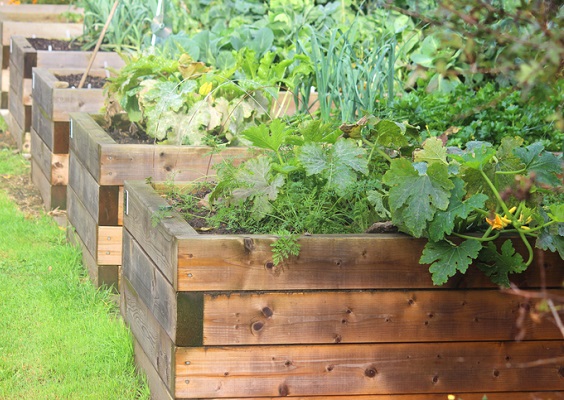How to Incorporate Raised Beds into Gardens
Reading time: 4 minutes
Reasons to bring raised beds into a garden design
You should look at using raised beds when you come across any of these situations when doing a garden landscaping project:
-
When you are working on a garden that has poor or heavy soil.
-
The garden is known to become waterlogged during bad weather.
-
The garden is often subjected to frost or insects which damage crops by feeding on them.
-
Property owners are looking to grow plants that would struggle to bloom in soil found in a standard UK garden.
A raised garden bed can also help those with restricted mobility to continue to enjoy gardening, can keep soil warmer for longer periods of the year and make an outdoor space more aesthetically pleasing.
How to effectively plan the position of a raised garden bed
You won’t want to just place a raised bed wherever it will best suit the garden that you’re working on. A few considerations should be made so that you find the perfect location for these items.
Aim to position raised beds in either the south- or west-facing part of a garden. This is so that plants growing in them can get exposure to as much sunlight as possible, instead of going into shade from overhanging trees, houses, sheds and fences.
Working to install a raised garden bed that has a long width into a property’s outdoor space? It will be best to run this from north to south, so that all plants being placed in the structure will receive even levels of sunlight.
From a design planning perspective, also try and place a raised bed next to a water butt or within easy reach of a garden hose. Property owners will need to keep plants growing in the beds frequently watered, so having these items close to a water source will save time and effort when a person is doing some gardening.
Consider constructing garden paths between raised beds as well, so that property owners can easily get to the structures without needing to walk over muddy grass or stones. Make these paths wide too, so that a wheelbarrow can easily travel along them.

Top tips for completing a raised garden bed design
By now, you will be ready to place raised beds into a garden in the most effective way. Just make sure to follow these tips to finish the installation in style:
-
Make compost in a raised garden bed by placing wood chips, straw and other organic material in the bottom of a raised bed.
-
Coarse gravel or stones should also be put into the bottom of a raised bed to assist with drainage, though sand should be used instead for deeper beds to achieve the same purpose.
-
Landscaping fabric can be used to line a raised bed and increase the structure’s durability too.
Make sure to keep expanding your knowledge and expertise in garden landscaping by reading more gardening advice and guides found within our helpful Trade Corner hub.




